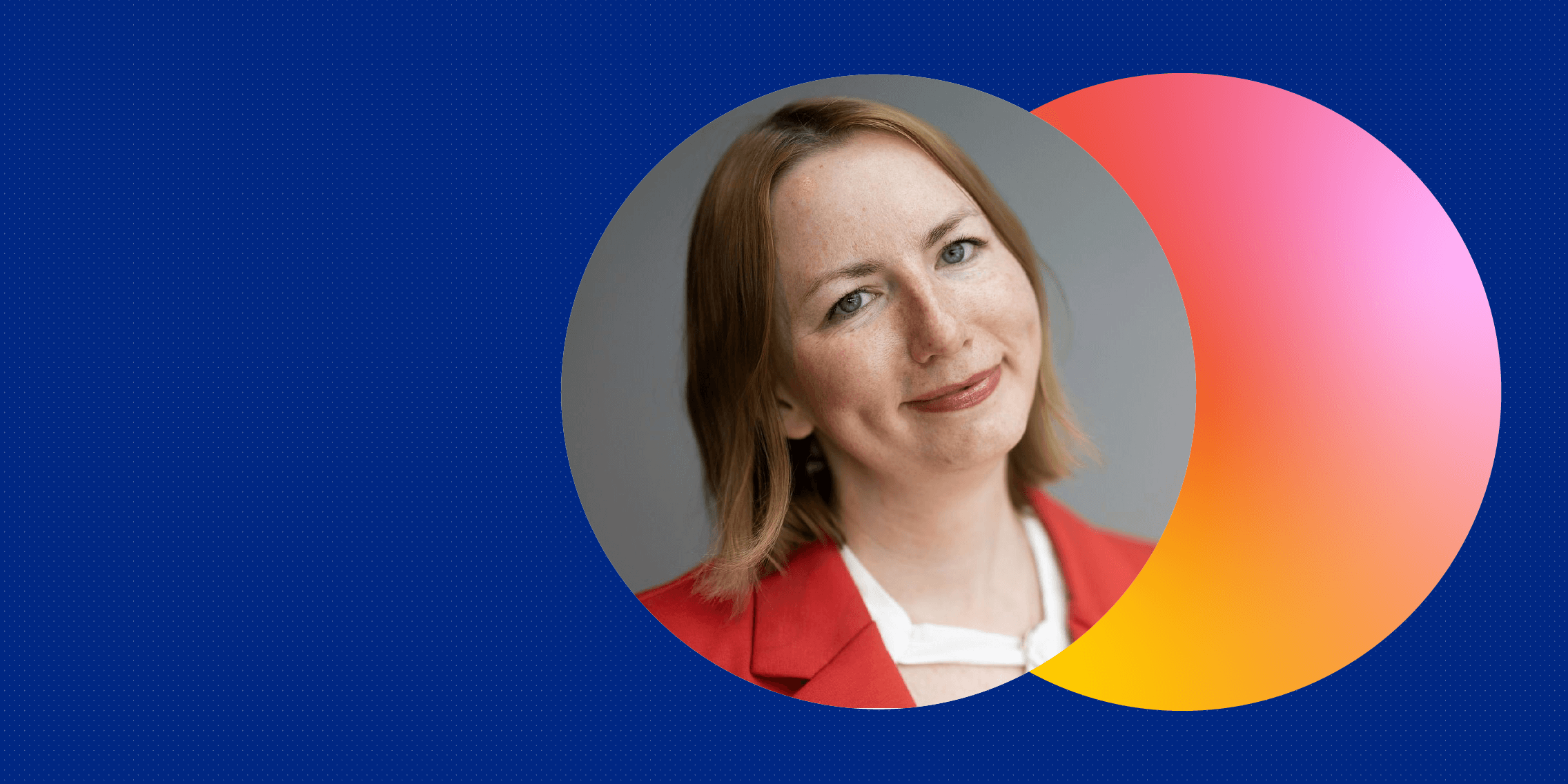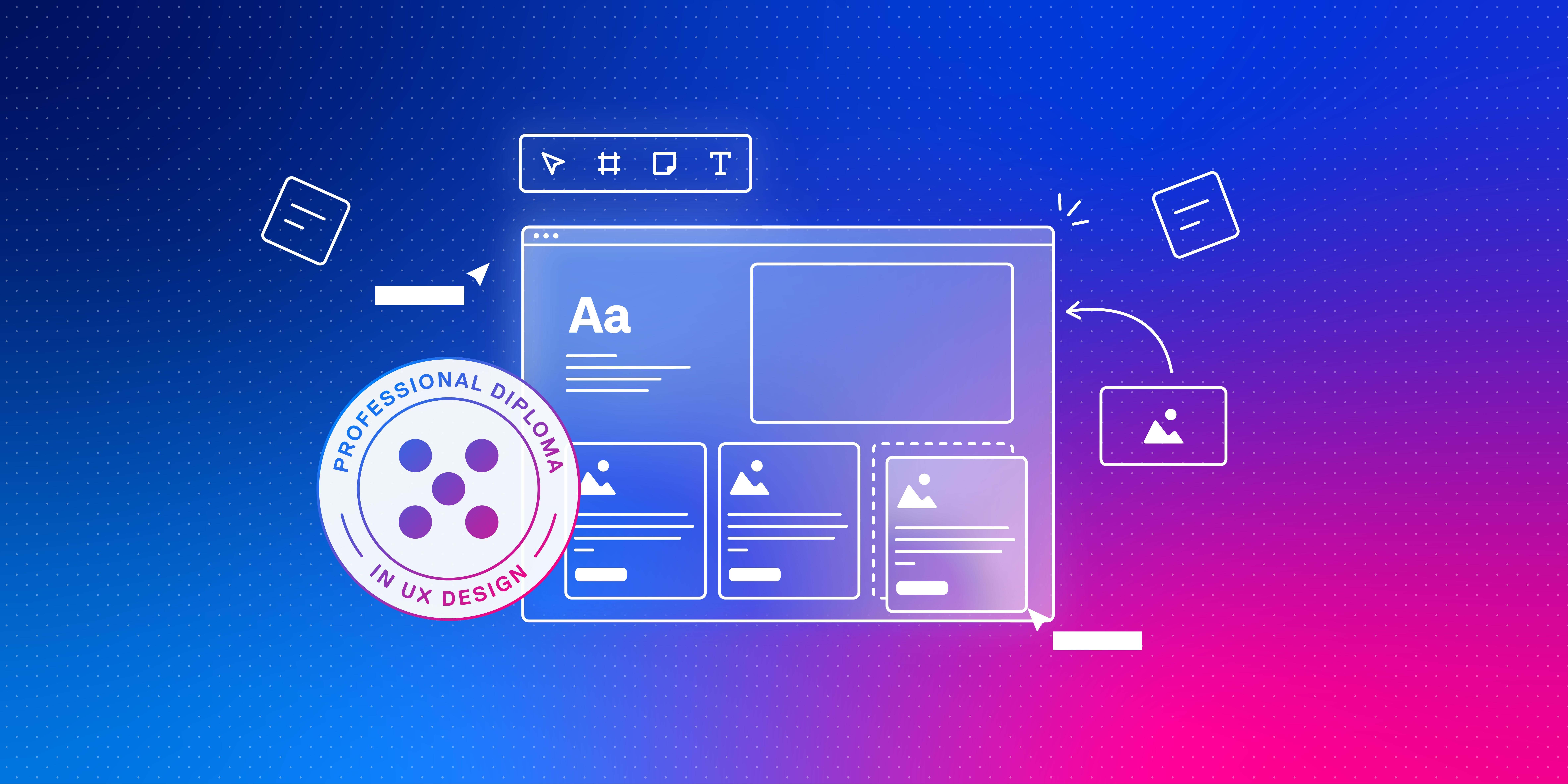If you’re reading this, you probably want to become a freelance UX designer. You’ve thought about what freelancing could do for you but now you want to know what you need to do to start your freelance career.
Maybe you’re changing careers or maybe you have a full-time job but – either way – you’re looking for more freedom. In this guide, we’ll go over what a career as a freelance UX designer looks like, from getting started to getting clients. We’re talking about the good and the bad of starting a freelance UX design career.
The Roadmap
While there are some drawbacks to being a freelance UX designer, the benefits may outweigh the costs if you’re looking for autonomy and freedom. Having a strong foundational education in user experience and a clear roadmap for your freelance career can make all the difference for your success.
The freelance UX designer’s roadmap:
How to start a freelance UX Design career
Starting is the hardest part of nearly every task and this is especially true of freelancing. People can sometimes get caught up in the excitement of being able to work whenever they want wherever they want but, in reality, you have to want to be a freelancer.
You have to get work and essentially run a business – acting as the marketing department and accountant – while working as the UX designer you set out to be. There are a lot of moving pieces when it comes to freelancing and you have to want it. But the freedom that comes with this career path is worth it.
But once you get past the early stages of establishing your freelance career, it gets easier. The key is not stopping once you’ve started. If you keep going – even when it gets tough – the momentum will pay off in the long run. Before you get excited about building momentum, let’s talk about how to begin.
Learn the skills
The first step in becoming a freelance UX designer is learning the skills you need to be a UX designer. There are a few ways you can go about this. You can take a professional diploma course or bootcamp, self-teach or attend a university program in design or computer science.
If you are switching careers, the fastest route to becoming a UX designer is through a bootcamp or professional diploma course. These programmes teach job-ready skills and help you build a portfolio that you can use to get clients when you become a freelancer.
Set up your business
Once you’ve learned the skills to cover the UX design part of your new job as a freelancer, it’s time to set up your business. As a freelancer, you’ll not only be a designer. You’ll also be handling the nitty-gritty stuff like setting your rates, drafting contracts, invoicing and taxes.
The most important parts of setting up your business are contracts and invoicing. You can find free and paid contract templates around the web or you can hire a local lawyer to draft a contract template for you. For invoicing, you can use a client management system, bookkeeping software or payment processor, like Deel or Paypal, to send invoices and collect payments.
In most countries, taxes are not excluded from your pay. That means you’ll need to set aside money to pay your taxes on the schedule that your country and local province requires. Check with a tax professional or with your local tax codes to plan for this.
Lastly, you need to decide on pricing. This will vary based on your experience, country and niche within UX design. A good starting point is with your annual salary. Determine how much money you need to make annually to pay for your expenses and savings goals. Then, divide that by how many hours you want to work that year. That will give you a baseline hourly rate.
To get an idea of the average salary of a UX designer, take a look at this guide.
Network and get clients
As a freelance UX designer, you’re also the head of sales and marketing. This is where your soft skills come in handy. Freelance UX designers can find work at startups, agencies, tech companies and sales companies.
Networking builds the foundation of your business. The more effort you can put into this in the beginning, the better your business will thrive long term. Build your network by connecting with other UX professionals and UX designers who inspire you or people at companies who might hire you.
Freelance UX designers typically report to a UX Manager, Lead UX designer, Product Manager, Research and Development Lead, Startup CEO, chief technology officer or UI Developer. These are the titles you want to seek out when you’re connecting with companies that you want to work for.
Scale your business
Once you’ve landed your first 10 clients under your belt, it’s time to start considering the future of your business. With each project you do and each person you work with, you’ll slowly gather bits of information that allow you to learn what works for you.
Over time, freelance UX designers create systems for getting clients, quoting projects and your client journey. With a good schedule and the right tools, you’ll be able to scale these processes and raise your rates to reach the goals you might have in your business.
How to network as a freelance UX designer
You will likely cross paths with almost everyone you work with again in some way. Treat the world of UX Design as a small world. Networking starts with a conversation. Don’t attempt to ask the person you’re connecting with for work immediately. Just try to start a conversation and see what you might be able to learn from them.
So where do you start networking as a freelance UX designer? Pick one or two platforms that feel comfortable to you and focus on them:
Networking platforms for UX designers:
- Medium
- Slideshare
- YouTube
- Quora
- Behance
- Dribbble
- Conferences
- Barcamps
- Service Jams
- Meetups
- Hackathons – find one local to you
How should you go about networking as a freelance UX designer? Try one of the following to connect with other UX designers and potential clients.
- Retweet or share their content/work
- Comment on their content
- Ask them a question
- Send them a compliment
- DM them
- Ask them to meet for a coffee or 20-minute long virtual meeting
How to manage your schedule and client load as a freelance UX designer
With no set clock telling you when your day ends, it’s up to you to draw boundaries so that you know when your working day (or week) ends. Here are some easy ways to manage your schedule and your clients.
Create a schedule
While each week will be different, try to structure your week so that you know certain tasks or clients are dealt with on specific days. If you want to fit more of your personal life into your working day – like working out or running errands – dedicate that time to the morning or afternoon and then fit your workload around it. You may also consider using a time tracking app like Traqq to monitor your daily activities and identify areas where you can optimize your time management.
Give yourself time to adjust
Going freelance can be a big adjustment. It might take some time to establish a relationship with clients or figure out how long each project will take. Always schedule more time at the beginning so that you learn to find your feet.
Learn when to say no
When it comes to earning money as a freelancer, it feels like we should say yes to every job that comes our way but that can result in burn out or low quality work. Learn what your pace is and only say yes to work that fits your schedule.
Don’t work more than 120 hours a month
When you see a blank month in the calendar, it might look as if you have 30 days that need to be filled with work-related tasks. However, we all need a break. When you remove yourself from work, you can return to it with fresh eyes and new perspectives. Create your own version of a weekend and use that time to relax.
Work with 3-5 clients – 7 maximum
Limiting the amount of clients you have means that you can dedicate quality time to the ones already on your roster. As a freelancer, you will have to bend to your client’s schedule and the more clients you have, the less time you will have to bend.
A day in the life of a UX designer
The best part of being a freelance UX designer is that you have quite a bit of freedom. Some UX designers typically work 9-5 so that they can collaborate with their clients when they’re online. Others prefer to work a non-traditional schedule to take advantage of their most creative times.
Every UX designer’s day-to-day will look different, of course. While not all UX designers work 9-5, we spoke to a few that do to get a sense of their schedule. We compared the daily lives of five UX designers to find what an average day might look like.
Morning
Most UX designers spend at least an hour each morning planning their day or their next sprint. Often, mornings are also when meetings and collaborative work take place. Some designers also schedule some time in the morning to implement revisions or start working on designs that they talked about in their morning meeting.
Afternoon
Afternoons usually have at least a couple of hours of focused design work, research or testing. As a UX designer, you’ll be spending a lot of time collaborating with your client and other people working on the project. So, most UX designers will spend at least an hour or two in the afternoon in meetings of some kind.
Benefits of a freelance UX Design career
The main benefit of a freelance career is freedom. Freelancers have the freedom to schedule their work virtually whenever they want, work from almost anywhere and work on projects they’re passionate about.
As a freelancer, you’ll quickly become a well-rounded expert in your field. This makes you valuable, even if you decide to get a traditional job eventually. There’s also more opportunity for freelancers to increase their income. Whether that’s picking up more work, raising their rates or offering a new service, a freelancer’s flexible income can come in handy.
Freelancers have room to be creative. If you don’t like a niche or specific service, a type of client or project, you don’t have to work in that way again. You can pivot to find work that’s more aligned with you and your skills.
Drawbacks of a freelance UX Design career
Freelancing might provide a certain type of freedom but it isn’t without its drawbacks. A freelance career requires organisation and self-discipline. Freelancing isn’t just gig work. Successful freelancing is running a business and handling everything that comes along with that.
For the most part, no one is going to be there to tell you what to do or when to do it. That’s your job. For most people, this line of work will lead to some kind of personal development – which can be difficult but also incredibly rewarding.
In more practical terms, how does freelancing compare to having a full-time, traditional job? Well, for some, freelancing can have a less stable income – especially when you’re first starting. With traditional employment, your job usually takes care of half or more of your taxes. In some countries, your employer will also provide your health insurance. Plus, most employers offer some kind of compensation for sick days and paid time off.
Conclusion
Everybody works in different ways and the freelancing way of life will not suit everybody. If you are considering a career as a freelance UX designer, the beauty of it is that it doesn’t have to be forever. You can choose to freelance for a certain amount of time and if it doesn’t work out, you can always return to traditional employment. You may have some contract jobs to wrap up but, ultimately, you are your own boss so you get to say when and how you work.
And if it does work out for you, you have the opportunity to strike the perfect work-life balance, while working on projects you are passionate about.
If you want to read more about getting started as a freelance UX designer, take a look at these freelance portals and Raleigh Tomlinson from Headspace gives us 12 tips on getting started.
Are you a business looking to hire a freelance UX Designer? Check out this guide for all the things you should look out for so you hire someone that best suits your business.




